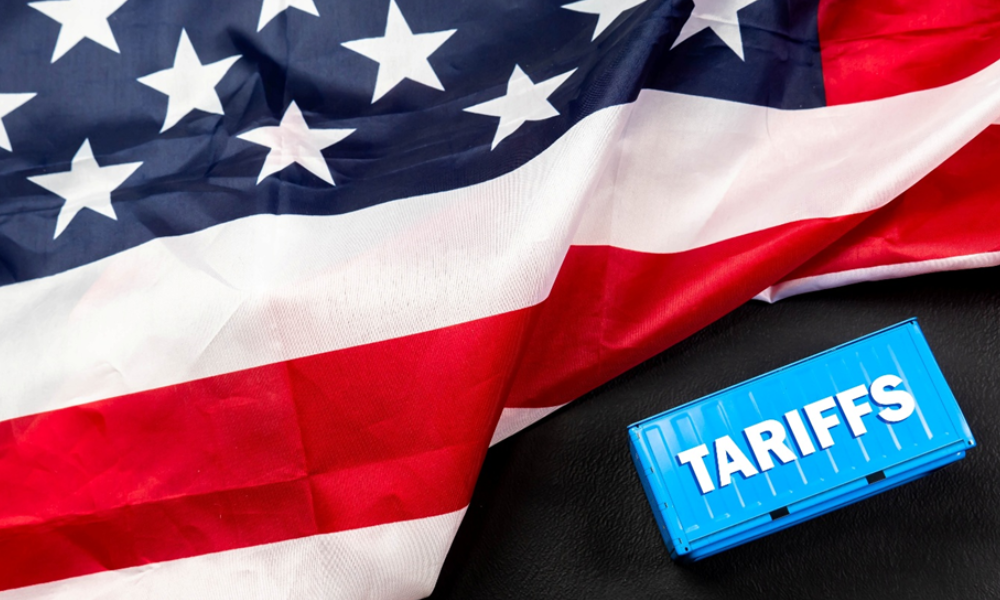As high US duties threaten the global diamond and jewellery trade, hope remains for an exemption.
The global diamonds, gems, and jewellery industry is expected to intensify efforts to secure an exemption from US import tariffs. US jewellers are best positioned to lead the charge, but global trade associations and their members also have a role to play.
The US has historically maintained zero tariffs on diamonds and gems from all countries, a policy that encouraged a steady flow of goods into the market there. That changed in April, when President Trump announced a base 10% duty on most goods from most countries, along with higher reciprocal tariffs for specific nations, to take effect after a 90-day grace period for negotiations.
That pause ended on 7th August, triggering a 15% rate for major producer nations — Angola, Botswana, Lesotho, Namibia, and Zimbabwe — as well as trading hubs Belgium and Israel. The United Arab Emirates and United Kingdom retained their 10% rate, while South Africa was hit with 30%, Switzerland with 39%, and China with 30% while US-China negotiations continue over a threatened escalation of tariffs.
Perhaps most significant for the industry, US imports from India now face a 25% duty, with another 25% set to take effect on 27th August — unless India scales back its purchases of Russian oil.
India Under Pressure
The impact of this steep tariff on India’s gems and jewellery industry — especially its diamond trade — will be felt throughout the global supply chain, influencing prices, sourcing strategies, and market dynamics.
India is the world’s largest supplier of polished diamonds and holds a significant position in coloured gemstones and finished jewellery. Meanwhile, the US remains the largest consumer market for these products.
“The United States is our single largest market, accounting for over $10 billion in exports — nearly 30% of our industry’s total global trade,” said Kirit Bhansali, chairman of the Gem & Jewellery Export Promotion Council (GJEPC). “A blanket tariff of this magnitude is devastating for the sector.”
According to the GJEPC, about 85% of exports from Mumbai’s SEEPZ Special Economic Zone — one of India’s most important gem and jewellery hubs — are destined for the US. Half of India’s cut and polished diamond exports also go to the US.
The higher duty threatens to erode India’s competitive edge in the global market. US jewellers, who will ultimately bear the additional cost, are likely to seek alternative suppliers from countries facing lower tariffs. If India’s elevated rate persists, manufacturers will be forced to shift more production abroad or shut down entirely. The GJEPC warns that the fallout could put 50,000 SEEPZ jobs at risk, along with tens of thousands more in Surat, the Bharat Diamond Bourse (BDB), and across India’s vast diamond-cutting cottage industry.
Supply Chain Disruption
That said, it is unrealistic for US jewellers to cut India out of their supply chains entirely. India dominates the cutting and polishing of smaller and mid-sized diamonds, with no other country able to match its scale, skill, or speed. Even if retailers shift some sourcing to lower-tariff countries like the UAE or Belgium, many of those polished diamonds will still come from Indian factories — and be subject to India’s higher tariff. The result will be higher prices throughout the chain, whether absorbed by jewellers or passed on to consumers, with little scope to avoid India’s central role.
The immediate impact of the tariffs has been deep uncertainty and a slowdown in trading. August is typically a quieter month for the diamond industry, with bourses in New York, Antwerp, and Ramat Gan closing at different points for summer break, and companies are using this seasonal lull to assess their options.
For now, the US market has enough goods to meet demand, as suppliers shipped diamonds in bulk ahead of the original April tariff deadline. That buffer may disappear once jewellers begin stocking up for the holiday season and can no longer delay purchases.
The tariffs have also cast a shadow over the festive period. While prices have held steady so far, Goldman Sachs economists warn that consumer prices are set to rise sharply in the fall — a shift that could squeeze discretionary spending.
Securing Zero Tariffs
The stakes are high, and the outlook is uncertain, making it almost impossible for businesses to plan. Much of the industry’s challenge — though not all of it — could be eased by restoring a zero tariff on diamonds and gemstones.
That would require the Trump administration to add these products to Annex 2 of the US reciprocal tariff order, which lists products and minerals exempt from tariffs — and from which diamonds and gems are currently absent. The trade is arguing that diamonds and gemstones are raw materials and natural resources the US does not produce domestically and must import from foreign suppliers.
US trade bodies — including Jewellers of America (JA), the US Jewelry Council, and the American Gem Trade Association (AGTA) — are actively lobbying Washington, with the World Diamond Council (WDC) spearheading the effort on behalf of the global industry. Influential corporations such as Signet Jewelers and De Beers are also understood to be engaging with policymakers. Local trade bodies and companies worldwide must raise awareness among their own governments, some of which are still in negotiations with Washington, while smaller businesses and individuals can also play a role in amplifying the message.
Until now, the Trump administration had focused on talks with countries, delaying direct engagement with industries. That approach appears to be shifting after the 7th August deadline, signalled by the exemption of smartphones from the tariffs — reportedly influenced by strong lobbying from Apple, which imports a significant share of its iPhones from India.
This precedent has raised hopes that other sectors could secure product-specific exemptions if they can make a strong case. The diamonds, gems, and jewellery trade certainly has one — not only because these are scarce natural resources unavailable in the US, but also because of the serious implications the tariffs pose for US jewellers and the global supply chain.
A window of opportunity appears to be opening — but it may close quickly. The industry must act now, speaking with one voice and delivering a clear, consistent message to secure the exemption before it’s too late. Failure to do so could have long-lasting consequences for the global trade.

Avi Krawitz is the Founder of ‘The Diamond Press’ and a leading content creator and consultant in the diamond industry. He is widely recognised for his insightful analysis and storytelling, offering clarity to both industry professionals and curious consumers navigating a complex and evolving market. See more of Avi’s work at www.thediamondpress.com

